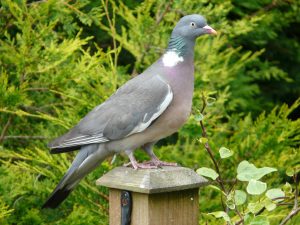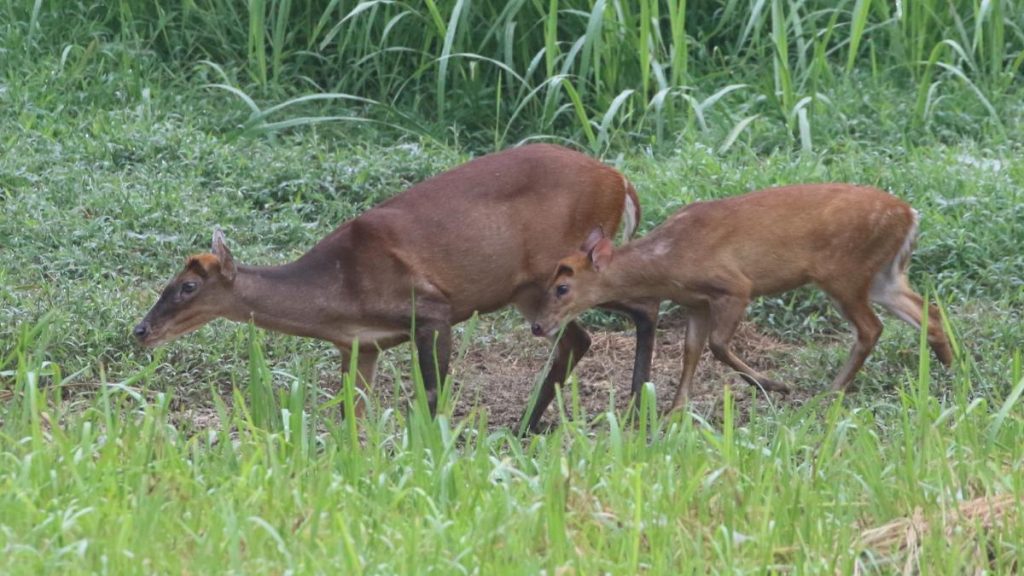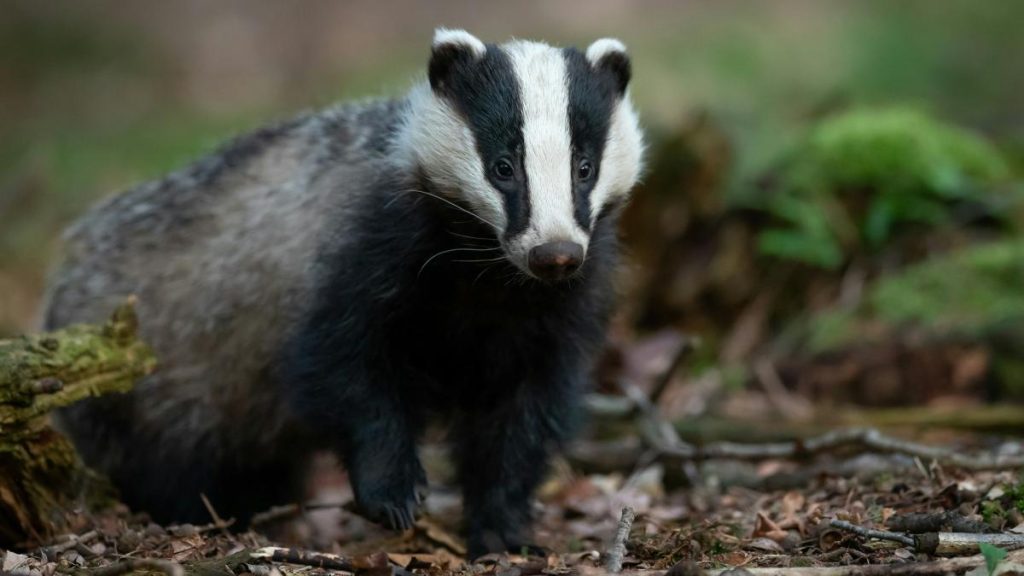Beyond slugs, snails and cabbage white caterpillars many gardeners have to contend with larger pest problems. Rabbits and pigeons are common pests even in urban areas and those in rural areas and outskirts of town can see their crops devastated by deer and badgers.
What are the options to control and deter these larger pests?
Rabbits
Bunny rabbits may look cute and cuddly but they can be a real problem to the grower.
Fencing Out Rabbits
Effectively fencing rabbits out of the garden or site is both time consuming and expensive. As rabbits make their home underground in burrows, obviously they can dig under a fence. So, to make the fencing rabbit-proof, the bottom of a mesh fence needs to be buried in a trench.
Regular inspections and maintenance are important but, especially with large areas like an allotment site, if rabbits do get in they can set up home inside the defensive perimeter.
Shooting Rabbits
Shooting rabbits can help by reducing the population but should only be undertaken by competent persons keeping in mind the risk to neighbours. Inaccurate shooting results in wounding, which generally means cruelly condemning the rabbit to a slow and painful death. Night hunting and lamping are not appropriate for gardens and allotments. There is always the risk of killing other animals like cats with this form of hunting.
In the past hunting rabbits served two purposes, crop protection and providing meat for the table. Rabbit meat is very lean and healthy but no longer as popular as it was.
Cats Control Rabbits
Young adult cats can be very effective rabbit controllers. Not all cats are good hunters. The hunting skills are partly genetic and partly down to early training from the mother cat. As cats grow older they’re naturally less effective. Generally cats hunting prowess declines once they pass five years old.
One of our cats was a fantastic rabbit hunter in her prime. In one day she killed four rabbits although she only managed to eat two of them. In the summer she averaged over ten rabbits a week.
Ultrasonic Deterrents
These devices are effective at scaring rabbits away but the range is limited – usually around 8 metres. They scar off a range of creatures as well as rabbits including cats, dogs, deer, squirrels and mice. Remember the cats and dogs are allies in the war against rabbits.
On an allotment you may well need half a dozen devices to provide effective cover. They’re also vulnerable to theft if that’s a problem on the site.
Spray Deterrence
Grazers G1 is a spray applied to the plants that makes them unpalatable to rabbits and other pests. They state
When applied to green photosynthesising leaves and stems, the calcium-based, Grazers products work by creating a ‘plant-mediated effect’ that dissuades the pests from eating these plants.
The indigenous pests then seek other nearby food sources instead and so leave our plants to thrive, helped in their growth by the calcium nutrient in the products.
Therefore Grazers benefits not only our plants, which in effect are ‘helped to help themselves’, but also predators of the plant pests, thereby keeping the natural wildlife food chain in place, so enhancing the environment.
Grazers G1 is formulated to deter rabbits, pigeons and deer. To be effective application needs to be thorough and applied prior to pest attack. It requires repeat applications to maintain the effect.
My experience is that Grazers is generally effective although not 100% and thorough application takes time.
Deer
Deer, usually Roe or Muntjac deer, have become a major problem in some areas.
Fencing Deer
Fencing to exclude deer from the garden needs to be 1.5m high for Muntjac deer and 1.8m high for other species. Deer will easily get through horizontal wires so the fencing must be constructed from mesh like pig mesh. Ideally for Muntjac the mesh should be no larger than 7.5cm by 7.5cm.
Hedging for Deer
Fencing can be unsightly but can be used to protect growing hedging plants as a thick, tall hedge will keep out deer very effectively. However, it takes a few years to grow to a useful size. Hedges can shade vegetable plots and suck nutrients and water from the ground which may be as much of a problem as the deer.
Deterrents to Deer
Ultrasonic scaring devices can be effective but the deer can become accustomed to them so they lose their effectiveness over time.
Scent repellents such as lion dung, bags of human hair, human urine along the boundary may work but not always.
A scarecrow that is lifelike and flexible is often initially successful until the deer realise it’s not a threat. Moving it each day to a slightly different place may increase the effective period.
A dog, especially a larger dog with a good bark, will scare deer away but it depends on the dog being in the garden when the deer are. Barking may annoy neighbours but often they’ll be suffering the same deer problem and will be alright about the barking when they know the reason.
Grazers G1
Grazers G1 can discourage deer from eating your plants. See above under Rabbits.
Pigeons

Wood Pigeon Photo by Tristan Ferne from UK, CC BY 2.0
From Vegetable Growing Month by Month
Although some other birds may cause some damage to your crops, by far the worst culprit is the wood pigeon. They do tremendous damage to brassicas, especially in winter and spring when food is scarce. They can literally reduce a cabbage to a few stalks in a morning before you get out of bed. It’s not just brassicas; they enjoy peas and beans, even turnips and swedes, as well as fruit and berries in season. Seedlings are a particular delicacy in their diet.
Having seen a pair of pigeons sitting on a scarecrow, it obviously has little deterrent effect. I’ve also seen them alight on CDs hung on strings to deter birds, so that’s another great theory that didn’t quite work in practice. Pigeons are both persistent and clever birds. They soon become habituated to scarers and ignore them. Shouting will scare them away until you turn your back, when they’ll be back in short order.
The only answer is to net your crops. You need to ensure the netting is supported (so that they cannot press it down onto the crop to gain access) and that it goes down to the ground (or they will find their way under). Remember they can destroy a crop in a day, so net before it is too late, especially in winter.
A frame, with wire attached that can be fixed into the ground forming supportive sides over which a net can be spread, makes a convenient movable cage. Permanent plantings of fruit are best protected with a walk-in cage. These can be purchased in kit form or constructed with a little DIY knowledge.
The only addition I would make to that is Grazers G1 can help but I have seen a pigeon go down a row of onions pulling them out one at a time and discarding them as the pigeon realises he doesn’t like the taste.
Badgers
Badgers are omnivores who seem to have a particular love of sweetcorn as well as other vegetables. They will destroy a lawn in search of chafer grubs as well as earthworms.
Fencing Badgers
Badgers are powerful creatures and fencing has to be robust. Fence mesh sold for pigs is suitable for badger fencing. It needs to be buried in the same way as rabbit proof fencing but to a depth of 60cm to have a hope of keeping them out.
Scent Deterrence to Badgers
Male human urine, lion droppings and so forth are unlikely to bother Brock but some consider them worth a try.
Legal Note on Badgers
Badgers and badger setts are protected in the UK under the Protection of Badgers Act 1992. It is a criminal offence to injure a badger or to interfere with a badger sett. That includes a badger sett on your property.






